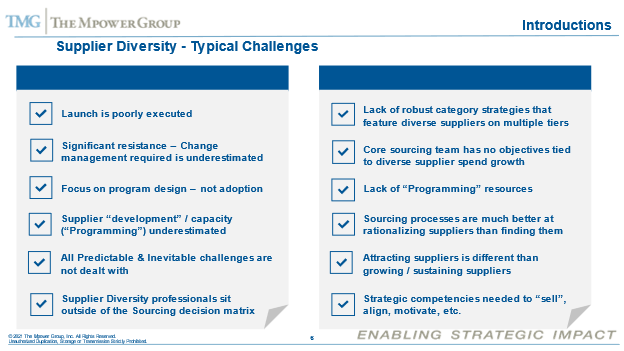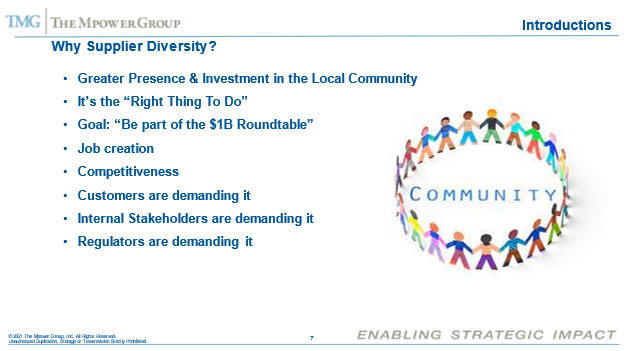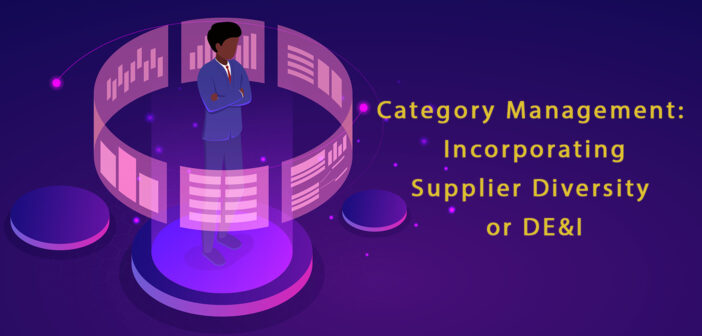This is no hyperbole – if you missed yesterday’s PERT CPO workshop, you missed a doozie! I have been part of many, many panels and have facilitated an equal number and this was definitely in the Top 5. It was going so well that the organizers were forced to suspend the rest of their agenda and just let the panel continue for the entire time. The panel consisted of Rob Cox (Centene), John Weeks (Oceaneering)and David Little (CDK Global) representing a combined revenue of $125B and corresponding spend.
Before I discuss some of the proceedings, let me share with you an introductory slide from yesterday:

Take a moment and go through the above and see how many of these you agree with because most of the participants nodded their heads in agreement. See below if you would like to compare your responses with hundreds of your colleagues, but back to the workshop.
Here’s the gist of the discussions – there is a confluence of events that have made Supplier Diversity a critical objective for almost all Sourcing/Supply Chain organizations. The pressure is coming from some of the traditional sources like regulators and government, but it is now accompanied by significant pressure from customers, it’s coming from employees and significantly more pressure from the Board of Directors. It became clear that SD was now considered to be a competitive differentiator which you must admit is a sea change from just a few years ago. Here is one more slide that underscores this:

An interesting discussion ensued on the role of employees. Of course, each of them was aggressively pursuing diversity in their workforce (some with impressive numbers). They also touched on the fact that recruiting and retaining employees was impacted by what they were doing in areas like SD because employees looked at that as a critical indicator. One area that seemed to be a weak point was the area of “programming” which (using a wide definition) is the ability to not only attract diverse suppliers but then to help grow them.
A number of techniques and tips were shared by the panelists and equally important they cautioned against trying things that did not work for them (we learn more from our failures?). Another area of mixed progress was being able to tie SD to the Stakeholder Value Drivers (SVDs) and there was strong agreement that this was critical. They also agreed that it was not just a quantitative relationship that was important in establishing that linkage between the two. This is clearly an area that needs significant effort in the broader DE&I community, and we don’t really see a concerted effort out there yet. The good news is that even without those strong linkages being established between SD and SVDs, the transition from SD being a “nice to do for others” has made the transition to “it’s a must for us”.
The workshop ended with a brief discussion on the Multiplier Effect, a concept we introduced recently which is how can we try to have an impact bigger than just the SD spend and everyone agreed that it was an aspirational concept that needed to be incorporated into our discussions now. What was heartening to hear was that despite some very impressive progress that each of the panelists had made, they all agreed that they still had a longways to go and were committed to get there. There was no lack of passion by any of them in exceeding their targets.
I would encourage you to benchmark yourselves against BEST NEXT Practices confidentially by taking a few minutes with this link. You will get back some interesting data.

